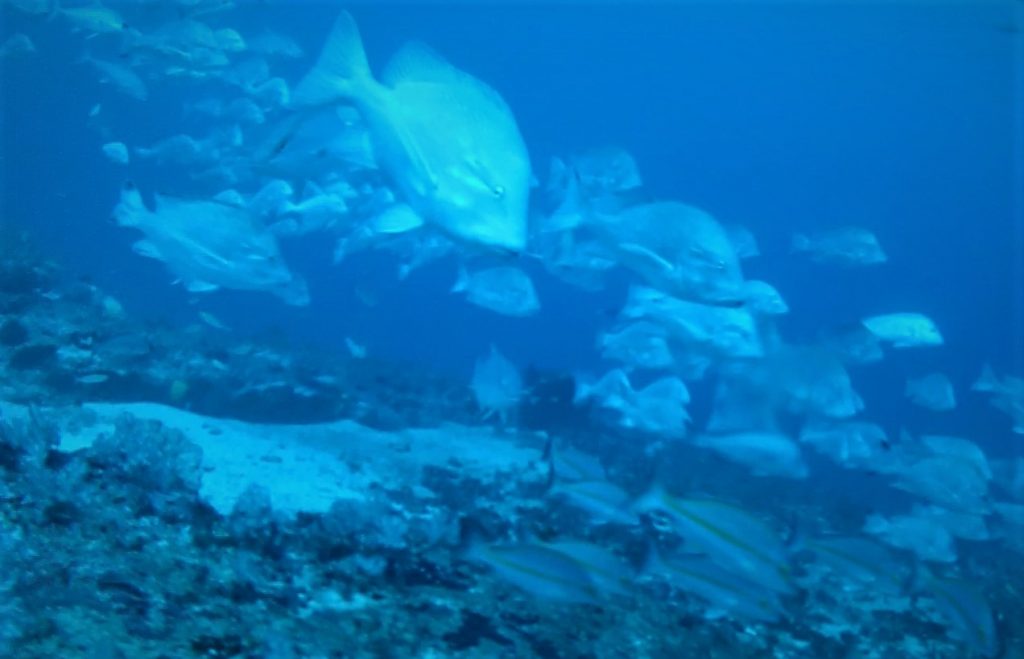
Learn more about the species you target to better your results.
Like many people I find the ocean to be a place full of unpredictable events and mysteries. The unknown of what’s under the surface waiting to be discovered is exciting. It is no secret that mankind knows very little about the ocean and it’s inhabitants although there are a lot of scientists and researchers doing their best to compile as much information as possible. Considering the amount of water that covers the globe we really have barely scratched the surface and this in itself makes it all that more exciting.
We spend our whole lives learning about so many different aspects of life from all kinds of people but when it comes to fishing very few people know about or even want to learn about fish species. Learning about particular fish species is not only interesting but also can play an important role in understanding their habitats which could in turn increase your catch rate. In general all fisherman know the basic fish habitats for common species and what I mean by this for an example is you wouldn’t go offshore to target Bream with a live Yakka or try catching Luderick with a half a pillie on the mudflats. All fishermen learn from others how to catch fish whether it is person to person, through magazines, books or even the Internet. Then you have fishermen who further their knowledge by trial and error, trying different ideas themselves. This is a good way to learn first hand if it works or not. This method also applies when learning about particular fish species. I believe that the knowledge of fish species among a lot of the average Australian fishermen is very limited and most of what they know about particular fish species comes from personal experience only. Theories and experiences from others can be seen and told differently and you can end up more confused so to develop a true and accurate understanding it is a good idea is to talk to “many” other fishermen, researchers or better still pro fishermen and proven successful fishermen.
Information we know on particular species can be basic or advanced. This advanced info is really what is needed to complete or at least better understand species habitats and how best to target them or even preserve them. Trying to find more advanced information can be half the battle if you have little or no contact with other successful fishermen but another way of getting advanced info is trying to find studies carried out by research groups, which give you some great and accurate data. This type of information is hard to come by for some but in this modern day in age the Internet can be your best friend and find you data you never thought was possible. Web sites like Austag (www.info-fish.net) and various government sites (www.dpi.qld.gov.au) have some really interesting data on many species showing growth rates, survival rates and recapture data. When you can put all this data together you begin to understand particular species and start taking advantage of what you know and use it on the water to help advance your knowledge on that certain species.
No one will fully understand certain species as different locations and depths can change the behavior of fish so local knowledge can be a key indicator. Take for example Large or Small Mouth Nannigai, which can be caught from the north Brisbane reefs extending up into the tropical waters of northern Australia. Around the Wide Bay Bar area these fish are not commonly found out further then approximately 20km area with most of our good catches caught less then 10km and in depths of around 45-60m but you head up around Townsville or Cairns area and these fish are caught in big numbers with Red Emperor out wide near the Shelf. The water depths are very similar and even when you head out from the wide bay bar it doesn’t get deeper then 65m until you reach the shelf so it just goes to show different locations can influence where and how various fish are caught. While on the subject of Nannygai I will share a little information that I have experienced with these fish but it’s one fish that has many questions needing answers for. These fish really seem to love wrecks but why is this so? Maybe it could be a particular weed or coral that grows on these wrecks or could it be the bait, which is attracted to them? It’s also interesting that only some small isolated reefs seem to hold these fish in good numbers and with them we often pull frying pan snapper, which makes you think that these two fish like similar reefs which I can only think that it’s a weed or coral which they are suited too. Nannygai are usually found in schools and large numbers can be taken from certain reefs but it’s easy to clean these fish off the reef in a quick session and it’s not uncommon for them to never return again. Nannygai are also known to follow large bait schools where they can be caught in big numbers on dead flat bottom. These fish have a fairly quick growth rate with one fish being tagged on 22/01/03 at 29cm in the wide bay bar area and then recaptured 01/07/03 at 34cm in same area and then recaptured again on the 21/04/04 at 45cm but this time was caught 4km north from it’s original area. This fish had grown 16cm in just over a year. (Information part of Austag program supplied to me from Tony Stewart on Baitrunner (Rainbow Beach fishing Charters).
I fish areas where you can almost be certain you know what species is about to hit the deck before even dropping a line but you head to other reefs not even 500 mtrs away and you will never catch that species no matter how hard you try. This is not uncommon among many species and it really makes you wonder what attracts these fish to such particular areas. This is something that has always had me curious so I guess an accurate way to find out more about various fish species and the reefs is by diving these reefs or speaking to divers, spear fisherman who have already done this. I would love nothing more to dive myself but finding the time is a battle so for me it looks like talking to divers, spear fishermen is the next best thing and the info I have gathered from these guys has been very valuable in helping me understand particular species and successfully target them. I happily use this information in articles and DVD’s to help others understand fish species as well and plan on doing it for many years to come.
Greg Lamprecht









